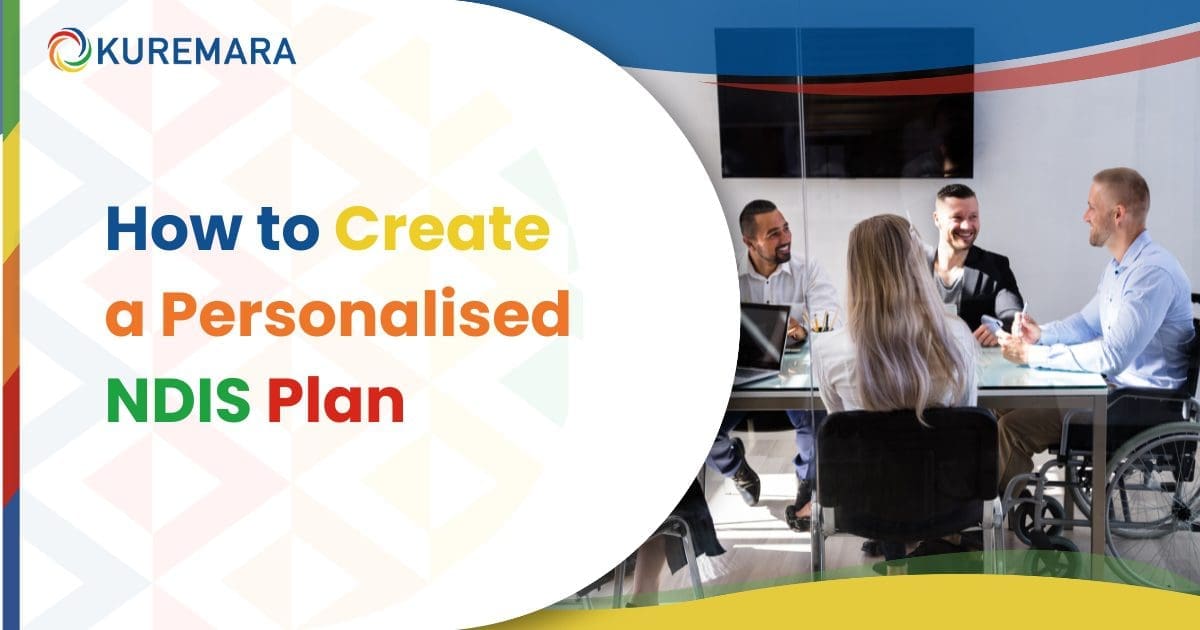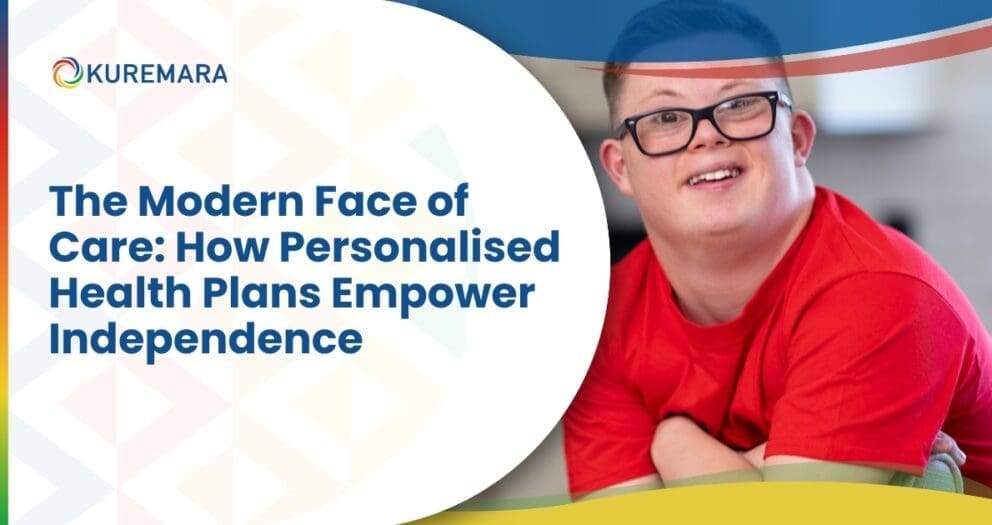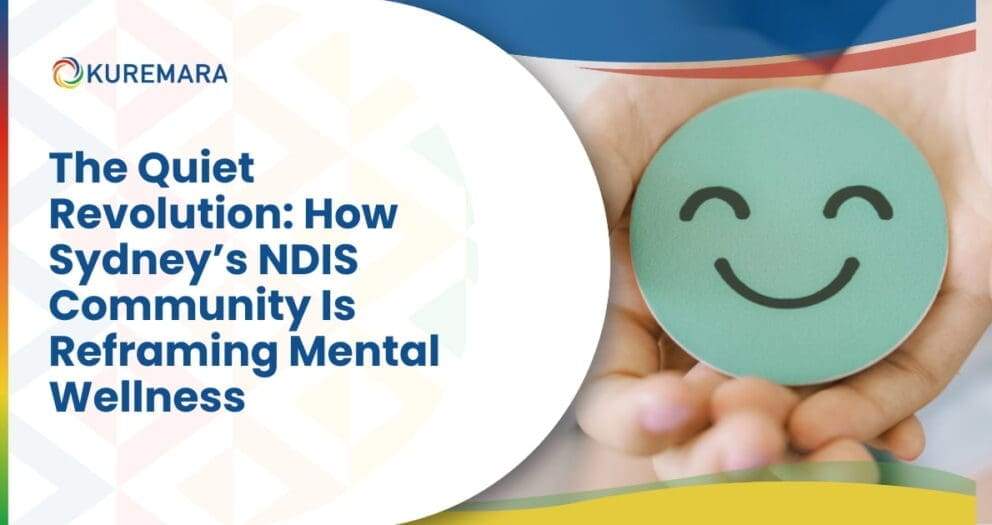Navigating the landscape of disability support can be complex. The National Disability Insurance Scheme (NDIS) in Australia aims to ease this journey with customised plans tailored to each participant’s needs and goals. A personalised Care Plan serves as a roadmap to achieving freedom, enhancing the quality of life, and unlocking new opportunities. This blog explores the essentials of such plans, detailing their creation, components, and importance for those needing comprehensive support. Understanding personalised Care Plans is crucial for participants, caregivers, and others interested in maximising the scheme’s benefits.
Understanding the NDIS
The National Disability Insurance Scheme is a federal government program in Australia. It is the first national Scheme that provides funding for people with disabilities. The primary aim is to improve the participants to have quality of life with abundant choice and absolute control over their support. They enable individuals to be connected with disability services available in their community.
The following benefits of NDIS Care Plan are:
- Individualised Support
- Increased Choice and Control
- Access to Diverse Services
- Financial Support
- Focus on Long-term Outcomes
- Community and Social Inclusion
- Support for Carers and Families
The main aim is to enable people with disabilities to live fulfilling lives by providing them with the support they need.
NDIS Care Plan: An Overview
An NDIS Care Plan is a legal document outlining the specific support services and interventions required, created through collaboration between the participant, carer, and NDIS provider. This plan addresses current needs and long-term goals, transforming disability support in Australia by providing individualised funding and full control over received support. Personalised NDIS care is founded on the principle of ensuring an independent and fulfilling life for every participant through individualised goals, choice and flexibility, collaboration, ongoing reviews, and comprehensive support.
The Importance of a Personalised Care Plan
Having a disability can be challenging to live life with independence but this should not hinder anyone from experiencing life’s joys and opportunities. Personalised care plan is a crucial part of the Plan. It includes daily assistance in cooking, grooming, cleaning and meal preparation.
A personalised care plan offers a vital solution for people with disabilities. It helps to lead a life where independence is highly valued. Through this plan, the patient can avail invaluable support in managing health conditions and getting medications.
Further, it ensures a seamless balance between work, leisure and social activities. The plan enables a sense of self-confidence and flexibility that translates into all aspects of the participant’s life. You can achieve growth and development with wellbeing and stability. This is proved by a study carried out by the Australian Institute of Health and Welfare (AIHW) reporting that 2/3rd of disabled participants are receiving personal care.
Steps to Create a Personalised Care Plan
Creating a personalise Care Plan includes a collaborative process to ensure that the plan effectively addresses the unique needs and goals of the participant.
Identifying Individual Needs

You need to craft an effective plan to make sure you receive the support you require. You need to identify your individual needs to create a comprehensive plan according to your situation.
You need to begin by evaluating your current circumstance. Identify areas where additional support is needed. Then think about your short-term and long-term goals. You need to work towards it to improve your living situation through clearly defined goals. After the assessment, you need to identify the support and services you will need.
Now consult healthcare professionals, support coordinators to give valuable insight according to your needs. With their aid, you can create a personalised Plan. Keep an eye on your goals, and the support you need and use your funding to acquire it. The plan needs to be realistic and achievable or else you will need to review and adjust the plan for it to be relevant and effective.
A participant’s goal is important because it can build their skills to increase independence, active social participation, pursue higher studies, get employed, and more. The goals give the participant the purpose to try new things and allow them to track their progress while striving to succeed.
Setting Goals

Every support taken from the funds must fulfill the ‘reasonable and necessary’ criteria. Most plans have goals that are short-term and medium or long-term. You need to set S.M.A.R.T. goals as it allow clear, measurable, and meaningful goal setting. Also, be realistic to stay motivated to achieve your goals. Set a timeline to align your goals with your interests and strengths. Take the help of a Local Area Coordinator (LAC), Support Coordinator, or your carer.
The important part of receiving personalised care is setting the right goals that reflect your life needs. So, you need to set both short-term and long-term goals. It is important because they initiate your support. Short-term goals need to be specific and give a good idea of your progress in this journey. Long-term goals can include employment or important life decisions. You need to have a mix of short-term and long-term goals to get clarity on what you want from this Plan.
Choosing Supports and Services

One of the best aspects of this plan is the ability of the participants to choose the support and services that align with their needs and goals. You need to create a roadmap by identifying your goals and needs.
- Understand the Plan thoroughly by reviewing it repeatedly.
- Take help from the professionals – healthcare specialist, support coordinator, Service provider.
- Express your preferences – after assessment and planning
- Aligned your personal goals with the support you receive
- Consider the impact of the support on the quality of your life
- Assess the adaptability and flexibility of your support.
- Seek inputs from the service provider on the effectiveness of their support.
The potential support and services that can be included in the plan are:
- Daily personal activities
- Mobility transport for community, social, and daily tasks
- Support to receive employment
- Therapeutic support
- Aid in household tasks
- Equipment assessment and training by skilled personnel
- Modification at home, mobility equipment, or transportation
Implementing the Plan

As your plan is approved, you will need to discuss with the Service Provider, and support coordinator regarding the implementation of the plan. This is called an Implementation meeting. This can be conducted within 28 days of receiving approval for your plan.
Six ways to know the participant’s role in the implementation process:
- Make connections
- Start the application
- Create the plan
- Use the Care plan
- Check-ins
- Changing the plan
Families play a multi-faceted role. They are coordinators, advocates and even emotional anchors for the participants providing stability, continuity and a deeper understanding of the participant’s daily experiences. This can be demanding at times. So, carefully implementing the plan can ease burden on the family members taking care of the participant so they can avail NDIS respite care.
Further they help to navigate the implementation process, actively participating in developing personalised plans so that the participant’s voice is accepted and their needs are met.
NDIS home care providers or carers are the frontline players in this process. They assist with daily tasks, give emotional support and even ensure the participant’s well-being and safety through top-notch support. They are critical in the holistic development of the participant.
Support coordinators help participants understand the plan. They understand the participant’s need and apply for the support budget, manage the funding and check what other requirements need to be fulfilled and provide quality NDIS home care.
Reviewing and Adjusting the Plan

Regular reviews are essential as it help understand whether the plan is relevant and effective. Due to the affecting factors, the plan could be adjusted. Reviewing helps track progress and supports adjustments. You can ensure proper resource allocation to increase the efficiency and effectiveness of the participant’s support.
Adjustments made to the plan needs to be personalised according to the changing needs aiding the participants to achieve their goals. Adapting to changing circumstances can provide flexibility to grow.
Tips for Creating an Effective Personalised Care Plan
Creating an effective personalised Care Plan needs careful observation, continual collaboration and a positive outlook. Some tips and best practices to enhance the effectiveness of your Care Plan:
- Engage in open communication.
- Encourage the participant to express their concerns, needs and feedback
- Focus on the participant’s strengths to boost confidence and motivation.
- Foster new skills to build the participant’s strength.
- Stay flexible and adaptable according to the changing needs.
- Prioritise clear and achievable goals.
- Note down everything for future reference.
- Consider all aspects of the participant for holistic well-being
- Build a strong support network.
- Monitor progress and celebrate success.
- Stay informed about regulations, support services, and funding options.
Conclusion
The process of creating a personalised Care Plan is a comprehensive process. It ensures that participants receive individualised support to achieve their unique goals and improve their quality of life. Recognise the individual needs, set clear goals, choose correct support and services, then implement the plan with regular reviews. The participant can navigate the Care Plan effectively through open communication, flexibility with a focus on their personal strengths. The right plan can guide the participants to experience greater independence, enhanced well-being, and a fulfilling life. You need to stay connected with your support network, take proactive steps to be truly empowered.
Connect with Kuremara, your support provider, and NDIS registered providers today to begin creating and implementing NDIS Care Plan and make meaningful progress. Let’s work together to build a strong support network and ensure your well-being and success. Your path to a better future starts now!
FAQs
Does NDIS cover aged care?
No, the NDIS does not cover aged care services. The NDIS is designed to support Australians under the age of 65 with permanent and significant disabilities. Aged care services for individuals 65 and older are provided through the Australian Government’s aged care system.
Does NDIS cover respite care?
Yes, the NDIS does cover respite care. Respite care provides temporary relief for primary caregivers, allowing them to take a break while ensuring the participant receives the necessary support. This can include short-term stays in care facilities or in-home respite services.
Does NDIS cover palliative care?
Yes, the NDIS can cover palliative care if it relates to a participant’s disability and is part of their NDIS plan. This support includes services that manage symptoms and improve the quality of life for individuals with life-limiting conditions. Palliative care must be reasonable and necessary to be funded by the NDIS.
 care@kuremara.com.au
care@kuremara.com.au






Write a comment
Your email address will not be published. All fields are required